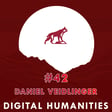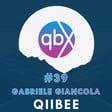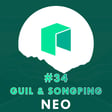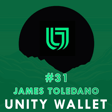
#19 Decentralized Messaging with dm3 cofounder Steffen Kux
Steffen Cox is the co-founder of the DM3 Protocol, a network designed to act as a the glue for all messaging apps. Before dm3, Steffen built slock.it alongside former core Ethereum dev Christoph Jentzsch.
The Core Functionality of dm3
dm3 was envisioned as a tool leveraging blockchain registry for ENS to create a decentralized registry for public keys and communication details. This registry would ensure that any message sent is encrypted and verifiable, countering the pitfalls of traditional email systems which often remain unencrypted or are siloed within specific platforms.
The long term vision is to create a unified application for all messaging, whether it's email, WhatsApp, Telegram etc.
Security and accessibility
One of the key aspects that Steffen highlighted was the need for security and privacy in communications, something the current email systems lack comprehensively. With DM3, the aim is to use blockchain technology for its inherent security features, allowing users to have encrypted and verifiable communications effortlessly.
Even with encrypted services like WhatsApp, communication is confined within the platform. dm3’s vision extends beyond these limitations by facilitating a system where communication protocols from various networks can interlink seamlessly through dm3’s decentralized messaging framework.
DM3 proposes a unique approach to tackle the scalability and efficiency issues prevalent in traditional and current blockchain-based messaging systems. By employing a relay network of decentralized nodes, dm3 ensures that messages are not just secure and private but also efficiently managed without overloading the network, addressing significant scalability concerns seen in other peer-to-peer messaging systems.
Future Plans and Community Involvement
Looking ahead, Steffen is excited about the evolution of dm3, emphasizing the protocol’s shift towards becoming a community-driven project. The upcoming features include enhancing the system's interoperability layer and expanding its functionality with new updates that promise to make the protocol more robust and versatile.
This podcast is fueled by Aesir, an Algorithmic cryptocurrency Trading Platform that I helped develop over the last 2 years that offers a unique set of features.



















